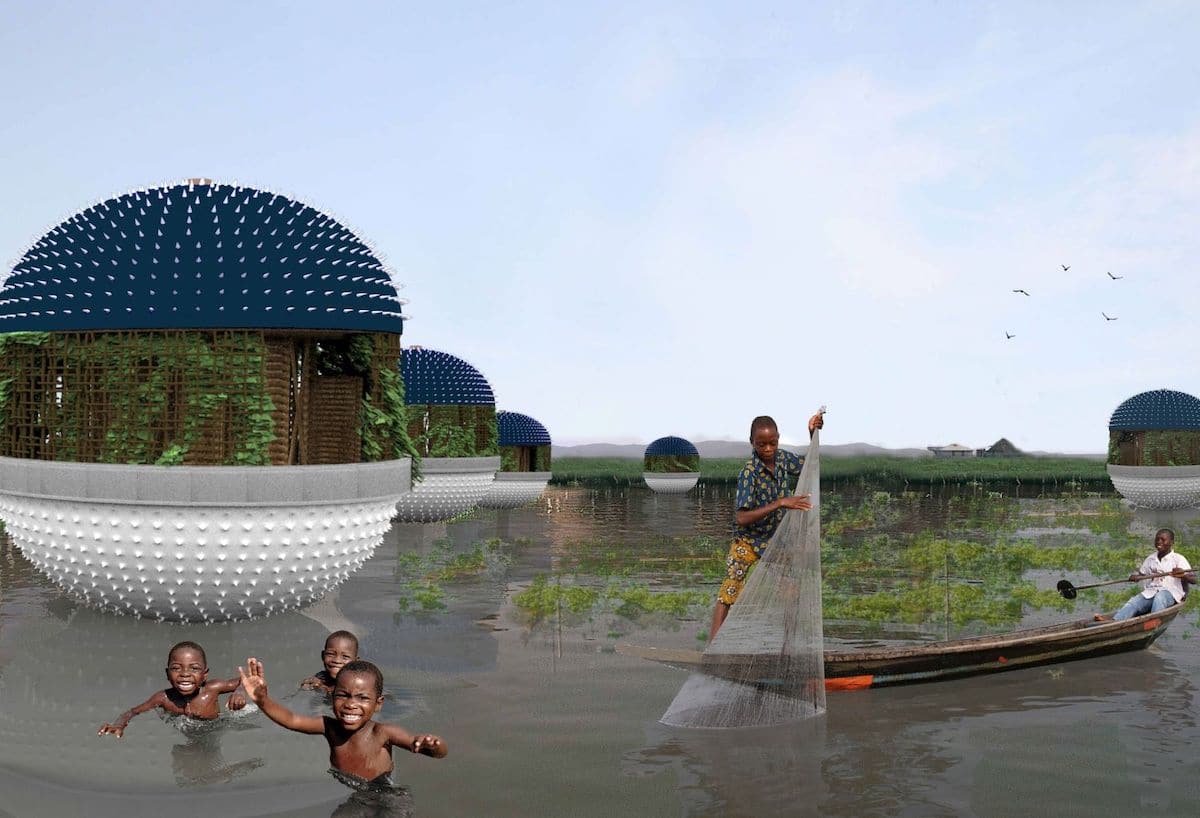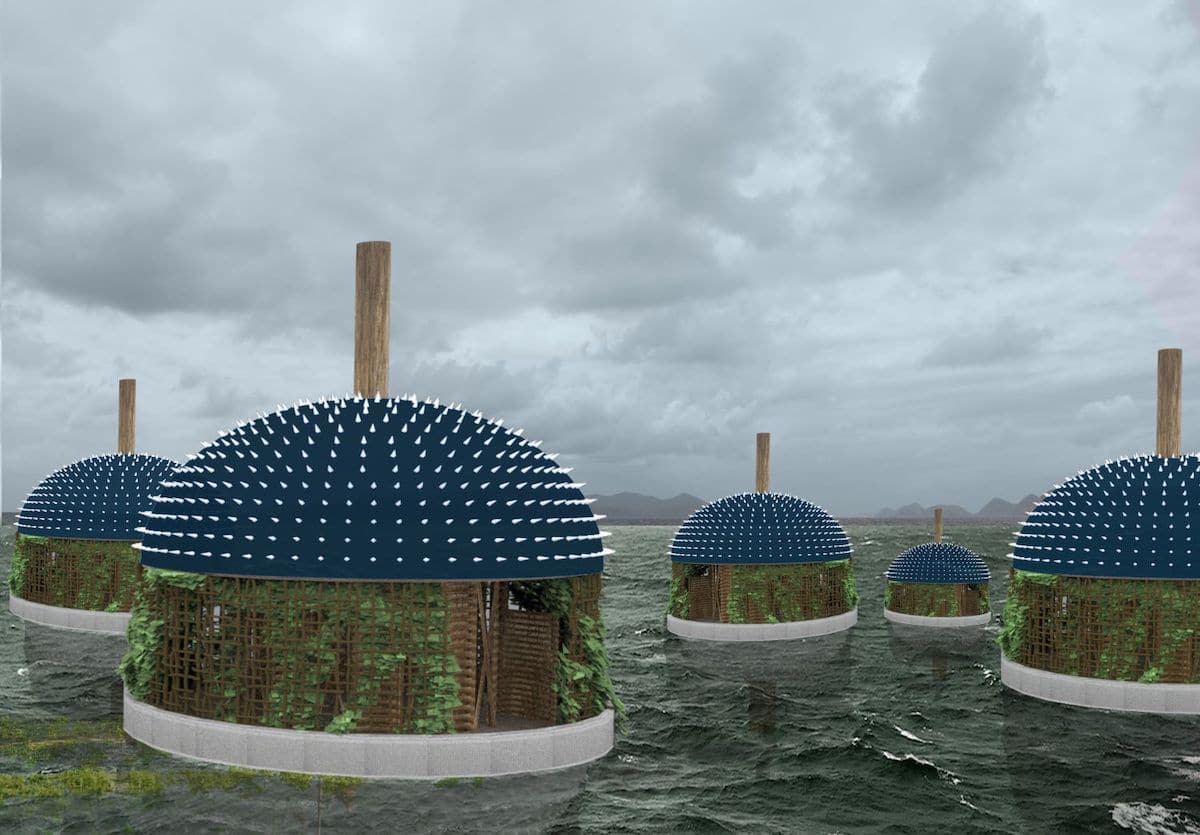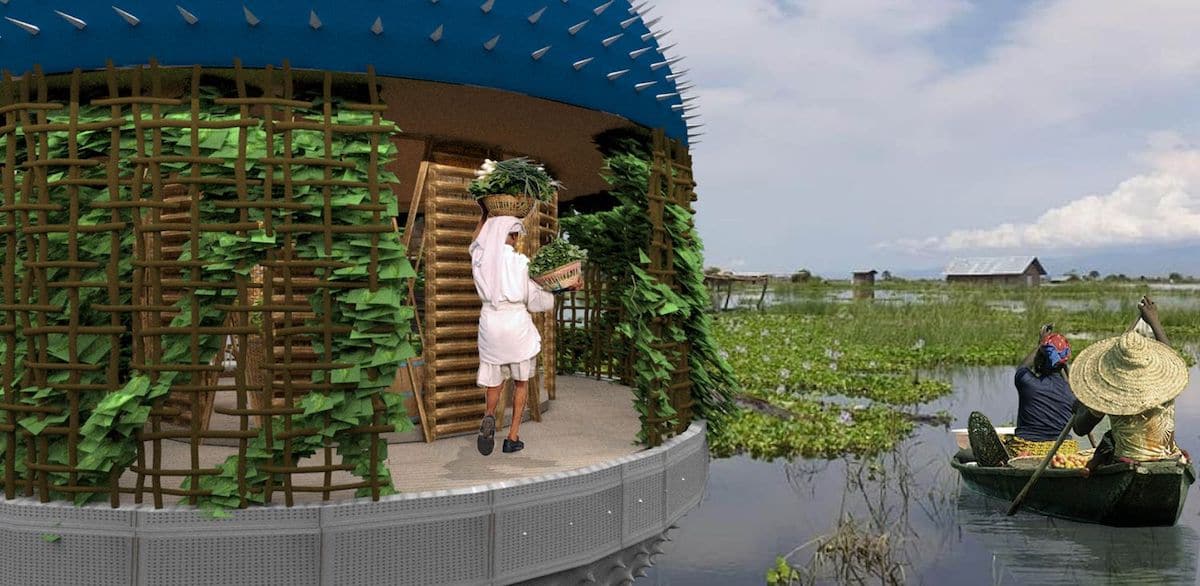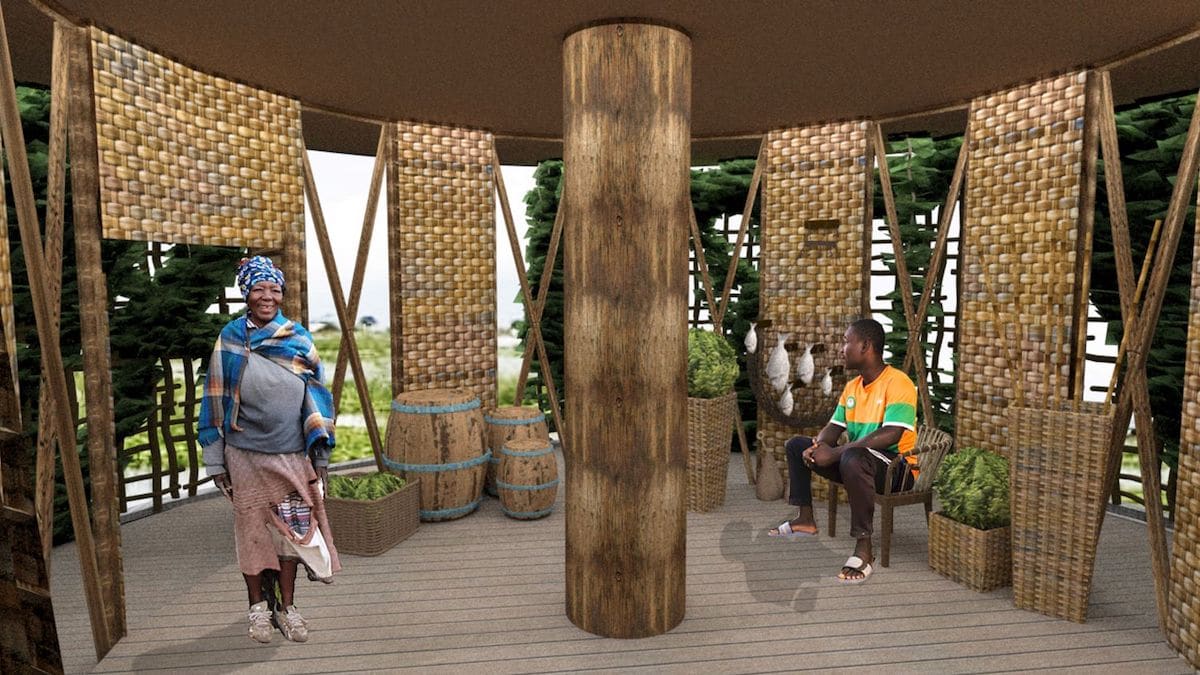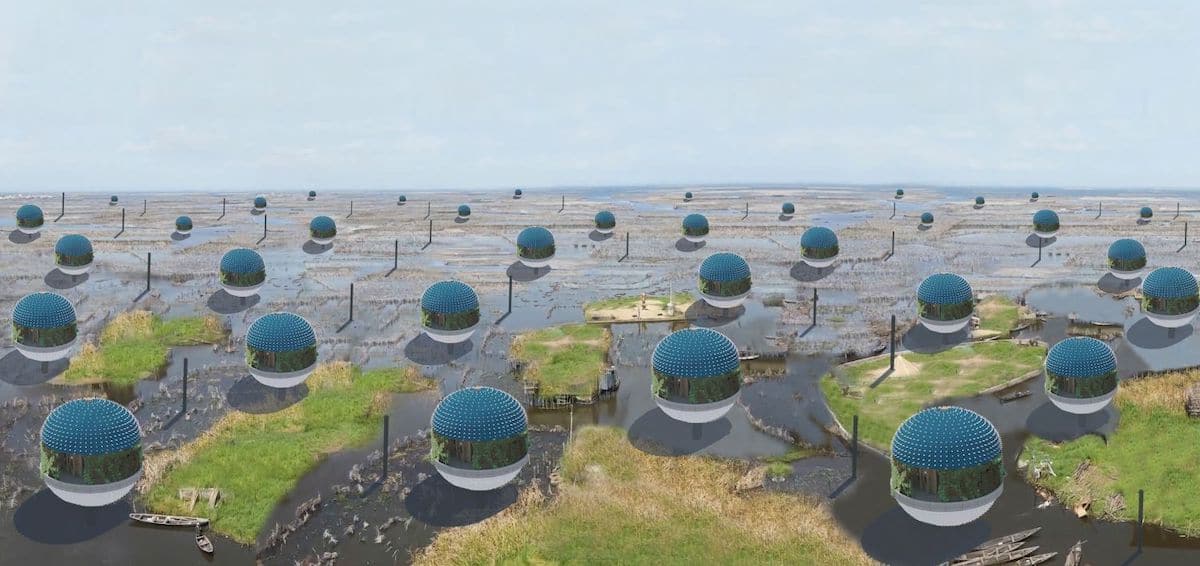
Architect Sajjad Navidi proposes Puffer Village as a bold solution for flooding in rural areas. Inspired by the high sea levels in the Ganvie Lake Village in the country of Benin in West Africa, Navidi imagines inflatable architecture akin to the pufferfish to replace the current houses in the area. While the wooden homes currently in use will ultimately become water damaged, these new structures would inflate and rise with the sea. The conceptual project was completed as part of Fondation Jacques Rougerie’s 2021 competition for architecture and art. It was included in a list of the 10 best entries in the “innovation related to sea-level rise” category.
Navidi used the logic of the pufferfish because it is common to the local lake of Nakoué. He was inspired by both the animal’s defense mechanism and its practices for attracting a mate. His response for sea-level change uses the inflation and deflation of a pufferfish as a way to understand how a floating house can fill with air to quickly rise on the water. Navidi also studied the underwater sand rings used in mating rituals to define the aesthetic of the new structures.

The adaptable nature would be possible with a sensor that monitors water levels as well as another that tracks high waves. As needed, a fan could inflate each unit, helping it to rise and stay floating on the water. An impact sensor would also allow water to enter the skin of the home. The added weight would keep the home from drifting off during storms and help to protect it from damage.
Puffer Village would generate electricity using both seawater and solar power through the use of photovoltaic panels on the roof. The architect hopes this source of energy—as well as an aquaponic system planned for each house—could help the village to prosper with better architecture and better agriculture.
Imagined by designer Sajjad Navidi, Puffer Village attempts to deal with rising sea levels by taking inspiration from a pufferfish.
